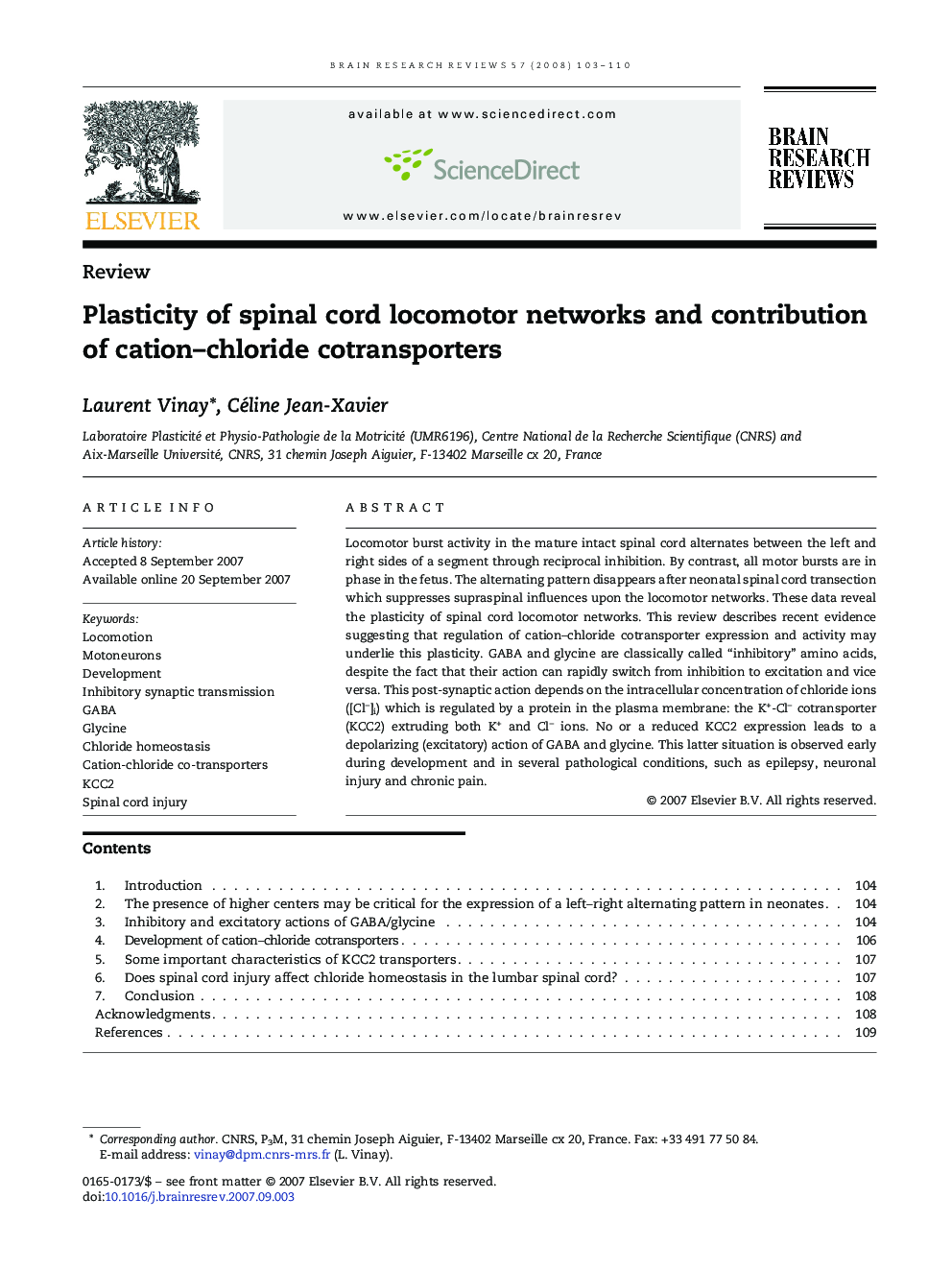| کد مقاله | کد نشریه | سال انتشار | مقاله انگلیسی | نسخه تمام متن |
|---|---|---|---|---|
| 4333922 | 1294759 | 2008 | 8 صفحه PDF | دانلود رایگان |

Locomotor burst activity in the mature intact spinal cord alternates between the left and right sides of a segment through reciprocal inhibition. By contrast, all motor bursts are in phase in the fetus. The alternating pattern disappears after neonatal spinal cord transection which suppresses supraspinal influences upon the locomotor networks. These data reveal the plasticity of spinal cord locomotor networks. This review describes recent evidence suggesting that regulation of cation–chloride cotransporter expression and activity may underlie this plasticity. GABA and glycine are classically called “inhibitory” amino acids, despite the fact that their action can rapidly switch from inhibition to excitation and vice versa. This post-synaptic action depends on the intracellular concentration of chloride ions ([Cl−]i) which is regulated by a protein in the plasma membrane: the K+-Cl− cotransporter (KCC2) extruding both K+ and Cl− ions. No or a reduced KCC2 expression leads to a depolarizing (excitatory) action of GABA and glycine. This latter situation is observed early during development and in several pathological conditions, such as epilepsy, neuronal injury and chronic pain.
Journal: Brain Research Reviews - Volume 57, Issue 1, January 2008, Pages 103–110